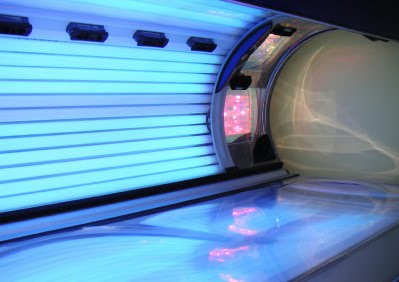More Blistering Truths About Tanning Bed Use By Youth
A new study published online last week in the British Medical Journal on tanning bed use by youth in the United Kingdom has raised concerns well beyond its shores (full study) (1).
The study surveyed over 9,000 children aged 11 -17 in England, Wales, and Scotland and found that 6 percent of those surveyed had used a tanning bed at one time, and another 15 percent of those surveyed had not used a tanning bed but felt they might do so in the future.
Rates of use varied significantly by location, gender, age, and socioeconomic status. Kids in the north tended to be more frequent users than those in the south. Girls were more frequent users than boys. Older kids more frequent users than younger kids; and those from lower socioeconomic groups more frequent user than those from higher groups. Most notable were the extremely high rates in 15 - 17 year old girls in the cities of Liverpool and Sunderland , where rates reached upwards of 50 percent, the most striking evidence of a culture of tanning developing in the youth of the UK.
Exposure to UV radiation, particularly in youth and young adulthood, is a main cause of malignant melanoma - a particularly deadly form of skin cancer. And even though sunshine remains the most common source of UV exposure, tanning beds produce intense bouts of UV radiation and have been shown to independently raise melanoma risk (2). With rates of malignant melanoma showing disturbing increases worldwide over the past decade, the results of the UK study are cause for alarm.
One silver lining in the survey: the youth who had not tanned said that health was a major reason for avoiding tanning beds. Yet, this message is not having an impact on the behavior of all youth. And with so much of the tanning bed use in the UK taking place in private homes or settings with inadequate supervision, youth are largely left on their own to make important decisions that can impact their long term health.
Moves toward mandatory restrictions on tanning bed use by minors under the age of 18 are gaining momentum in many countries, particularly Australia, which has been at the leading edge of sun and UV protection health campaigns. Compelling policy papers have projected significant cost and health benefits and little downside to such restricted use in youth (3, 4).
In the United States, rates of both developing and dying from melanoma are on the rise (5). Partly in response to such troubling trends, the FDA has recently held hearings to consider tougher restrictions on tanning bed use. The American Academy of Dermatology Association (AADA) - a public policy entity of the American Academy of Dermatology - goes so far as to support a total ban on tanning beds except for medical use. Outside of an outright ban, the AADA recommends:
- Prohibiting access to indoor tanning for minors (under 18 years old)
- Educating all indoor tanning customers about the skin cancer risks and requiring their informed consent
- Implementing and enforcing labeling recommendations outlined in the Tanning Accountability and Notification (TAN) Act
- Encouraging enforcement of state regulations
The tanning bed industry is largely opposed to such regulation, and given the competing public and private interests, it's hard to know where the FDA will fall with tanning bed policy. Voices in favor of greater regulation, though, are growing much much louder, and it's clear that steps that lower tanning bed use, particularly in minors, will go a long way toward lowering melanoma rates and improving the health of future generations.
Literature cited
- Thomson, C.S., et al., Sunbed use in children aged 11-17 in England: face to face quota sampling surveys in the National Prevalence Study and Six Cities Study. BMJ, 2010. 340: p. c877.
- World Health Organization (2003) Artificial tanning sunbeds: risk and guidance.
- Hirst, N., et al., Estimation of avoidable skin cancers and cost-savings to government associated with regulation of the solarium industry in Australia. Health Policy, 2009. 89(3): p. 303-11.
- Gordon, L.G., et al., What impact would effective solarium regulation have in Australia? Med J Aust, 2008. 189(7): p. 375-8.
- Edwards, B.K., et al., Annual report to the nation on the status of cancer, 1975-2006, featuring colorectal cancer trends and impact of interventions (risk factors, screening, and treatment) to reduce future rates. Cancer. 116(3): p. 544-73. (http://bit.ly/ccF9ma)

0 comments:
Post a Comment